Welcome to our factory
The Tuscani chocolate factory is located in Tuscany, Italy.
Built in the spring of 2019 to provide cocoa raw materials and to produce artisanal chocolate using “bean to bar” technology.

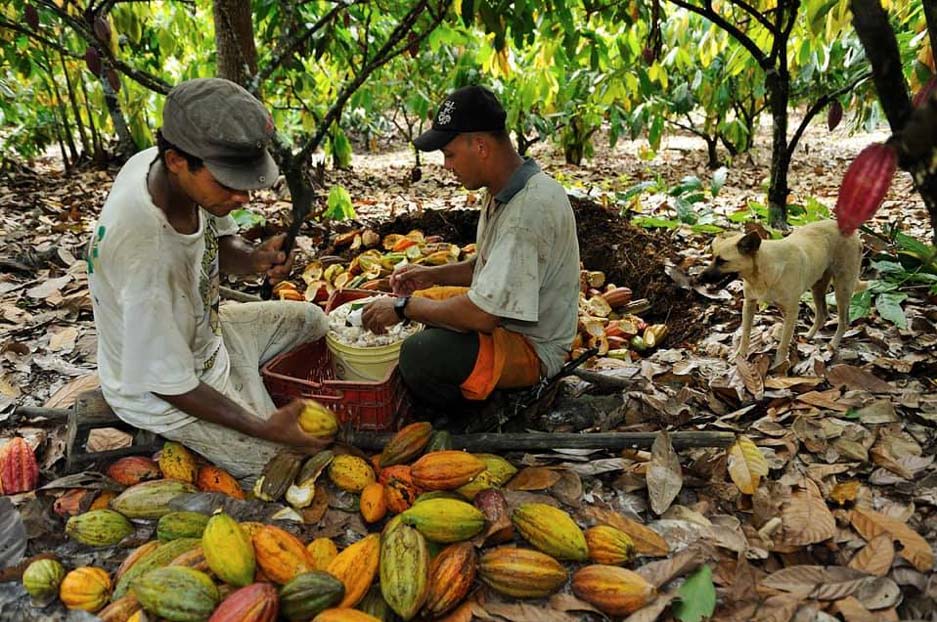
What is “Bean to bar”?
“Bean to bar” is a concept for the production of chocolate directly from fresh cocoa beans. Its controlled production from the plantation to the chocolate itself is a guarantee for a quality product.
Each step in this process is crucial to ensure that the maximum aroma and composition of the cocoa beans is extracted. In general, chocolate production practices have not changed much since Mayan times, and only equipment and production processes have improved over time.
These processes can be divided into seven main steps:
1. Harvesting and fermentation
Cocoa trees constantly make buds, picking cocoa pods is done manually, removing only the ripe fruit from the tree without damaging the other fruits and flowers.
The pods are then carefully opened to detect the cocoa beans that are inside a bed of fibrous, white and moist pulp. The cocoa beans together with this white mixture are removed and left in special containers to ferment.
Through the process of fermentation, the aroma of cocoa beans begins to change: from mostly bitter to obtaining a complex aroma.
Fermentation can take up to eight days, depending on the type of cocoa beans.
The better the fermentation process, the better the taste of the cocoa beans and the less time will be needed for their heat treatment afterwards.
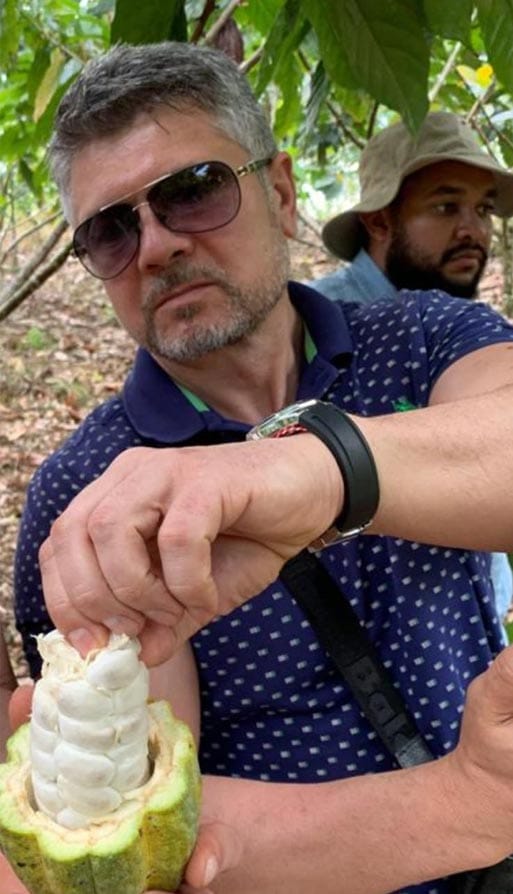
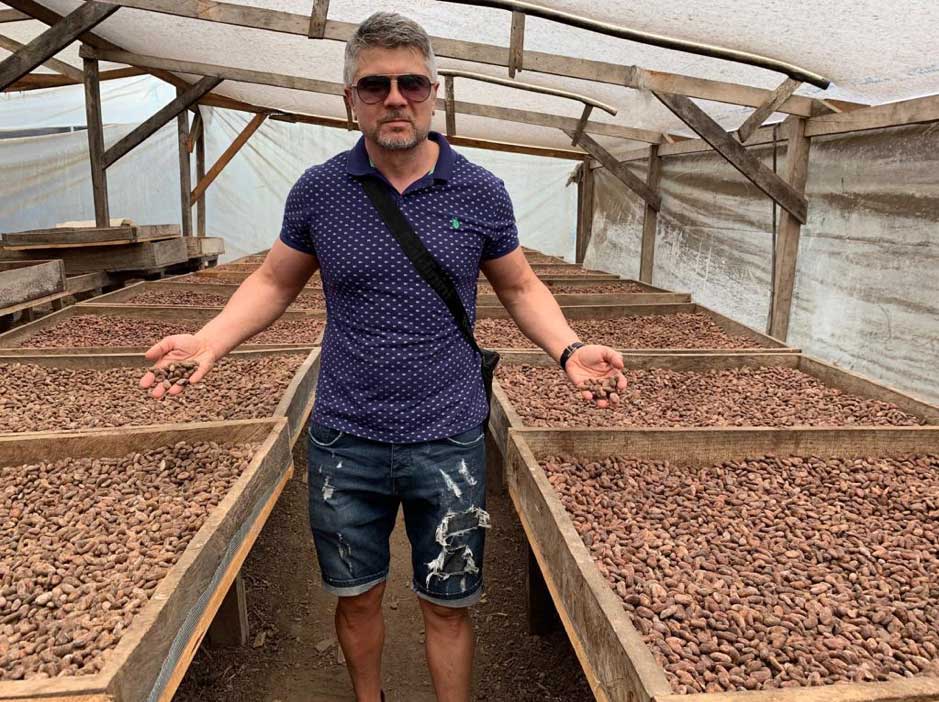
2. Drying and storage
After fermentation, cocoa beans are swollen and have a high moisture content. To store them, they must be dried.
The drying process differs depending on the climatic conditions or the size of the plantations.
Cocoa beans can be dried in the sun on grills or mats where the climate allows. Solar drying usually occurs in smaller plantations in dry conditions. Once the percentage of moisture in the cocoa beans reaches 6-7%, they are sorted.
Sorting is a very important process, as cocoa beans are classified and sold according to their size. Each chocolate manufacturer has a strict “secret recipe” for each chocolate it produces. This secret begins with the type and quality of cocoa beans used.
3. Testing, cleaning and baking
When the selected cocoa beans arrive at the factory, they go through a very intensive sampling and verification procedure.
Sample cocoa beans are tested for size and defects, such as insects or mold, and then ground and boiled into pure chocolate liqueur for tasting, which is evaluated for taste and aroma by the company’s tasters.
After testing is completed and the shipment is accepted by the manufacturer, what grains are thoroughly cleaned. The cocoa beans are then baked for 10 to 35 minutes.
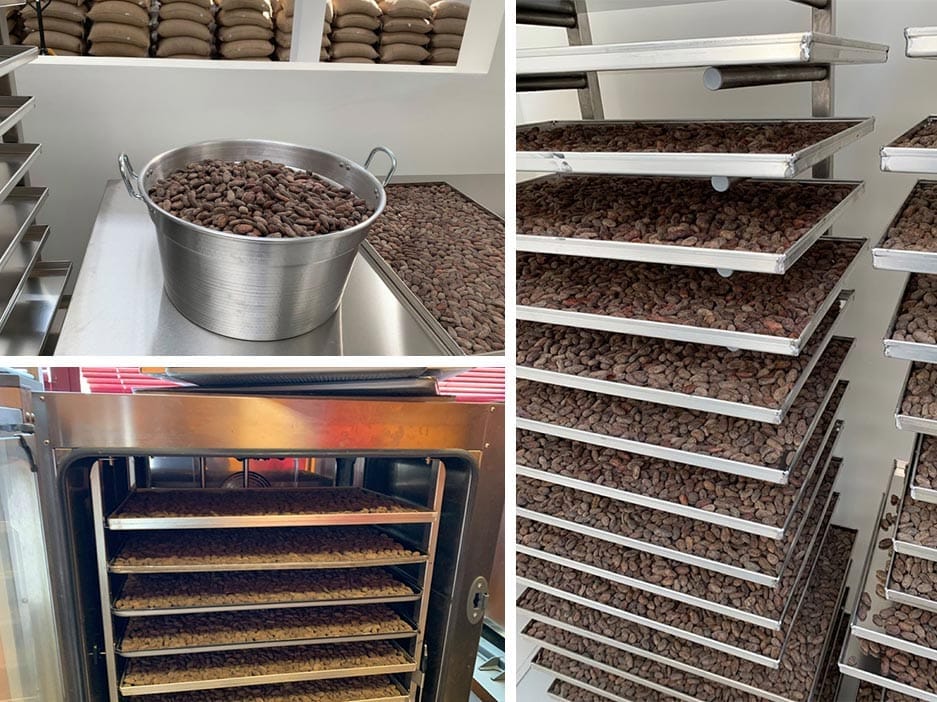
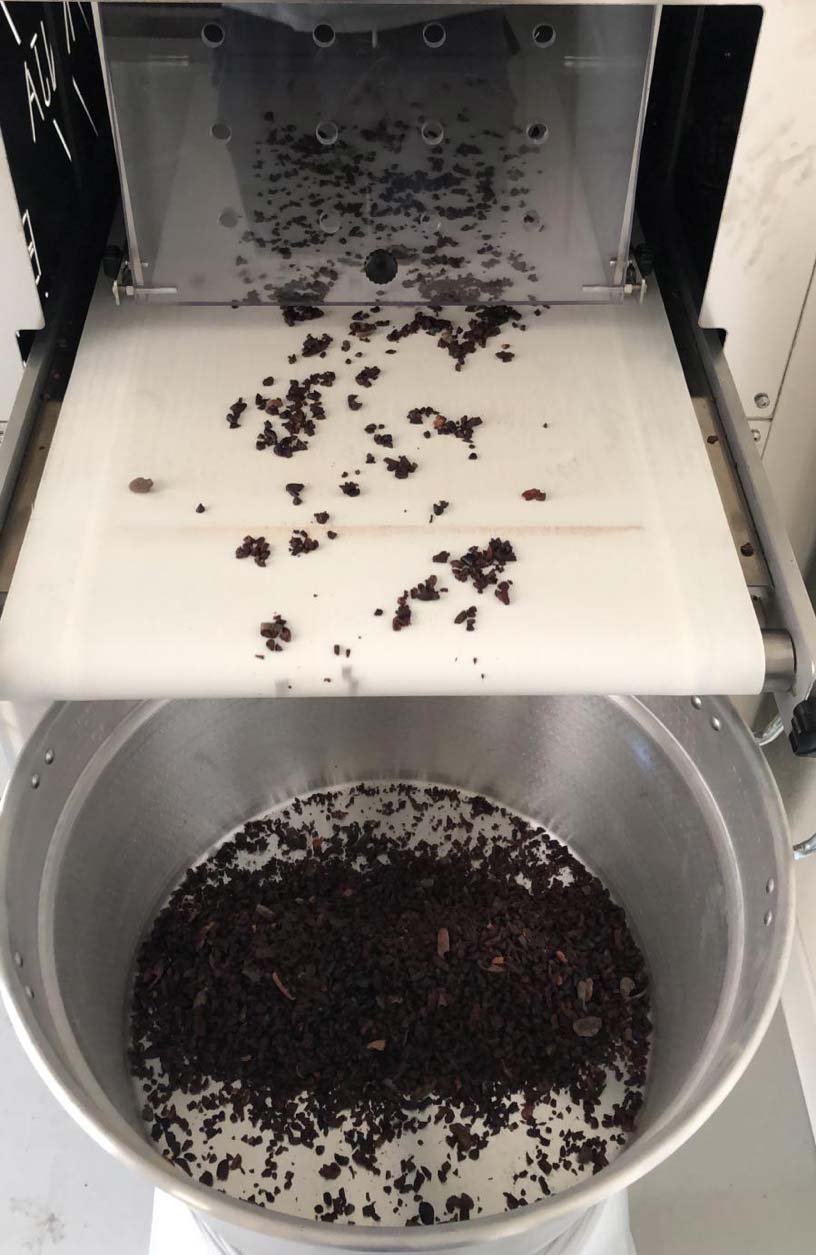
4. Fanning and grinding
During roasting, the shell of a grain cracks and separates from the core, after which it is removed. The kernels are ground until the cocoa butter naturally contained in them liquefies and the so-called cocoa liqueur is formed.
When this cocoa liqueur reaches the desired smooth creamy consistency, additional ingredients such as spices, dried fruits, superfoods, etc. can be added to it.
5. Conching
This process further enriches the taste of the chocolate liqueur, helping to release the inherent bitterness of cocoa and achieve a consistency that is smooth, fine and melts in the mouth.
For this purpose, machines (conching) are used with special rollers – rakes, which constantly mix the chocolate liqueur and its ingredients for a period of several hours or days, depending on the desired taste and texture that the manufacturer wants to achieve.

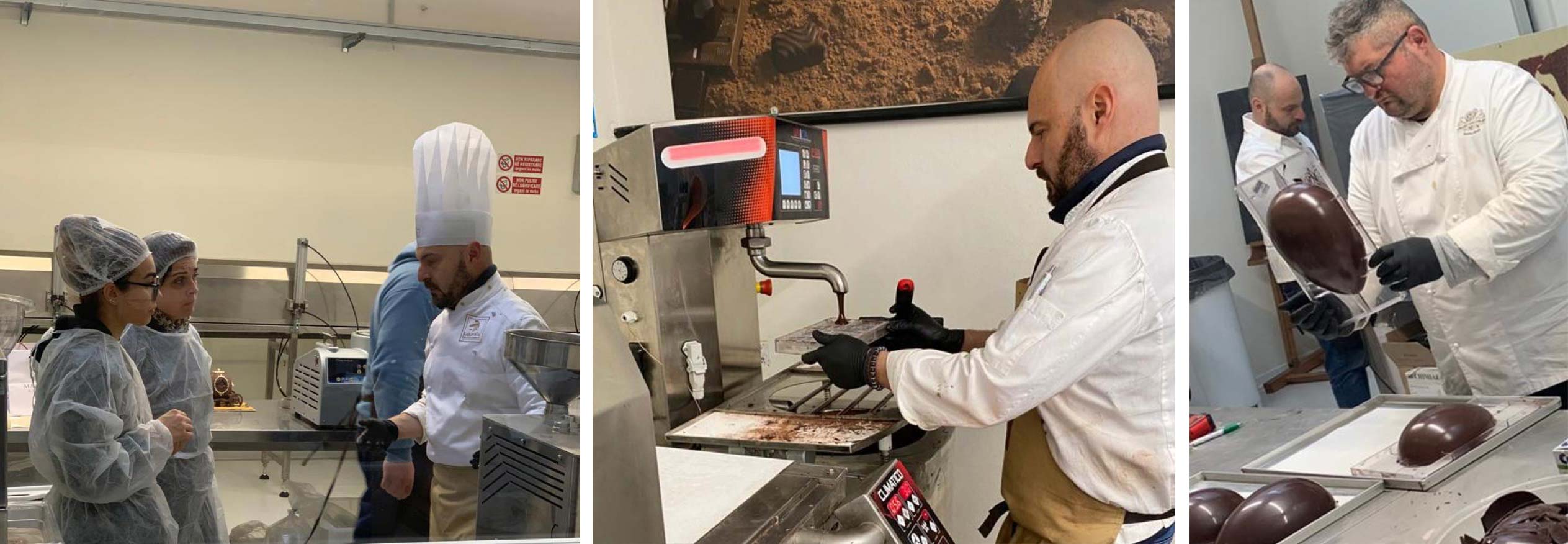
6. Molding
The chocolate mass is tempered and molded in bulk to obtain the shape of chocolate as we know it.
7. Package by hand
All Tuscani Ciocolato’s chocolate is carefully packaged “by hand”.
We produce our chocolate in a way that you enjoy making of it a present to your loved ones.
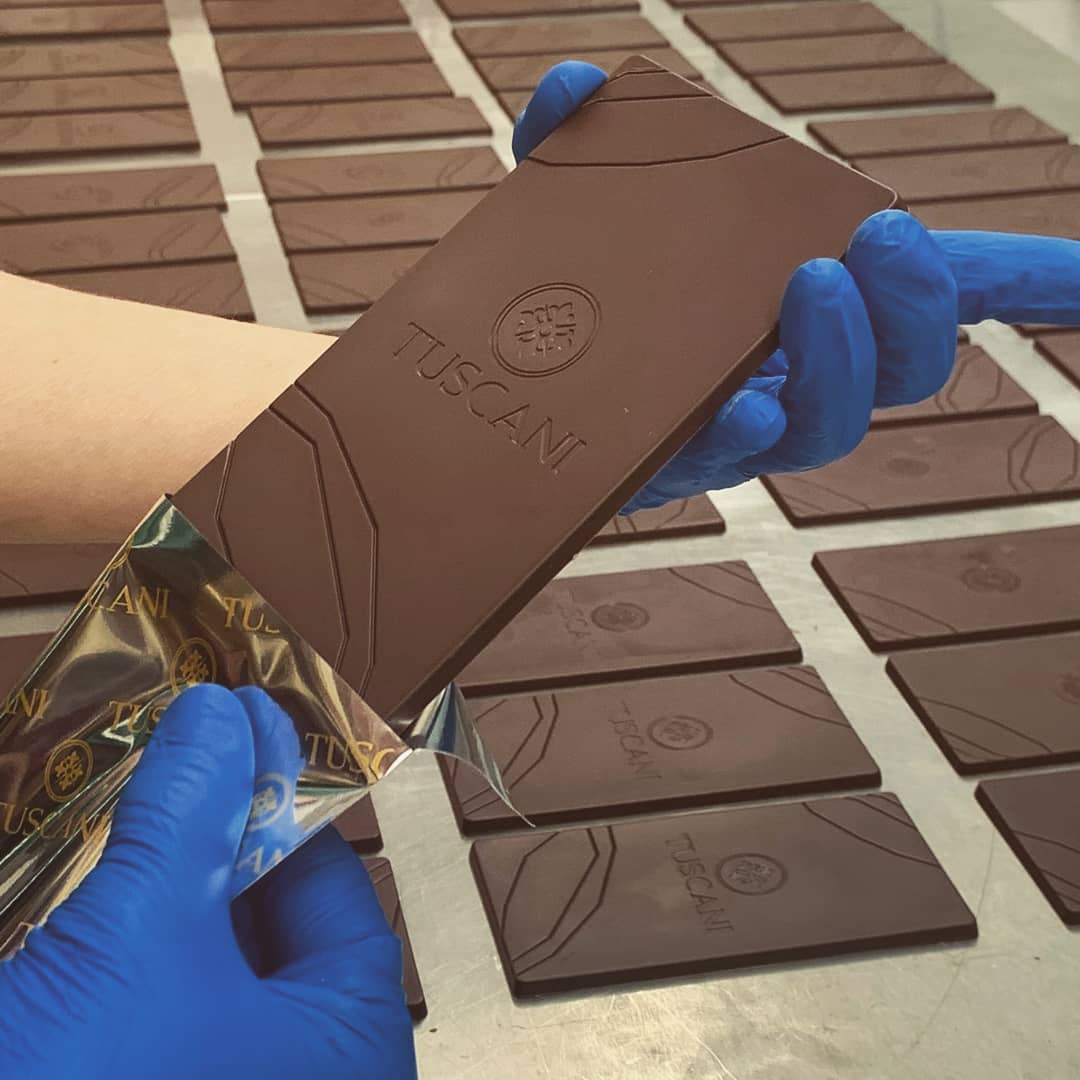
Health and Wellness
Did you know that organic cocoa is the plant food with the highest iron content, contains more calcium than cow’s milk and has over 40% more antioxidants than blueberries?
Chocolate and cocoa help stimulate the brain to release neurotransmitters that can trigger the feel-good hormone. Cocoa contains anandamide, the bliss molecule, which binds to cannabinoid receptors in the brain creating a sense of ease and happiness and phenylethylamine, also called the “love drug”, which releases endorphins that give alertness, happiness and a better sense of well-being.
Consuming cocoa not only improves your well-being, but also fights mood swings by increasing serotonin levels in the brain. In short, a super food suitable for those who follow a vegan diet or for those who want to find a balance between body and mind in the sweetest world known!
We suggest consuming 4/5 cocoa beans per day as a snack. Our cocoa peel, on the other hand, is excellent for herbal teas and infusions. You can also use the delicious cocoa nibs in the preparation of smoothie bowls or pancakes.
Welcome to our factory
The Tuscani chocolate factory is located in Tuscany, Italy.
Built in the spring of 2019 to provide cocoa raw materials and to produce artisanal chocolate using “bean to bar” technology.

What is “Bean to bar”?
“Bean to bar” is a concept for the production of chocolate directly from fresh cocoa beans. Its controlled production from the plantation to the chocolate itself is a guarantee for a quality product.
Each step in this process is crucial to ensure that the maximum aroma and composition of the cocoa beans is extracted. In general, chocolate production practices have not changed much since Mayan times, and only equipment and production processes have improved over time.
These processes can be divided into seven main steps:

1. Harvesting and fermentation
Cocoa trees constantly make buds, picking cocoa pods is done manually, removing only the ripe fruit from the tree without damaging the other fruits and flowers.
The pods are then carefully opened to detect the cocoa beans that are inside a bed of fibrous, white and moist pulp. The cocoa beans together with this white mixture are removed and left in special containers to ferment.
Through the process of fermentation, the aroma of cocoa beans begins to change: from mostly bitter to obtaining a complex aroma.
Fermentation can take up to eight days, depending on the type of cocoa beans.
The better the fermentation process, the better the taste of the cocoa beans and the less time will be needed for their heat treatment afterwards.

2. Drying and storage
After fermentation, cocoa beans are swollen and have a high moisture content. To store them, they must be dried.
The drying process differs depending on the climatic conditions or the size of the plantations.
Cocoa beans can be dried in the sun on grills or mats where the climate allows. Solar drying usually occurs in smaller plantations in dry conditions. Once the percentage of moisture in the cocoa beans reaches 6-7%, they are sorted.
Sorting is a very important process, as cocoa beans are classified and sold according to their size. Each chocolate manufacturer has a strict “secret recipe” for each chocolate it produces. This secret begins with the type and quality of cocoa beans used.

3. Testing, cleaning and baking
When the selected cocoa beans arrive at the factory, they go through a very intensive sampling and verification procedure.
Sample cocoa beans are tested for size and defects, such as insects or mold, and then ground and boiled into pure chocolate liqueur for tasting, which is evaluated for taste and aroma by the company’s tasters.
After testing is completed and the shipment is accepted by the manufacturer, what grains are thoroughly cleaned. The cocoa beans are then baked for 10 to 35 minutes.

4. Fanning and grinding
During roasting, the shell of a grain cracks and separates from the core, after which it is removed. The kernels are ground until the cocoa butter naturally contained in them liquefies and the so-called cocoa liqueur is formed.
When this cocoa liqueur reaches the desired smooth creamy consistency, additional ingredients such as spices, dried fruits, superfoods, etc. can be added to it.

5. Conching
This process further enriches the taste of the chocolate liqueur, helping to release the inherent bitterness of cocoa and achieve a consistency that is smooth, fine and melts in the mouth.
For this purpose, machines (conching) are used with special rollers – rakes, which constantly mix the chocolate liqueur and its ingredients for a period of several hours or days, depending on the desired taste and texture that the manufacturer wants to achieve.

6. Formation
The chocolate mass is tempered and molded in bulk to obtain the shape of chocolate as we know it.

7. Package by hand
All Tuscani Ciocolato’s chocolate is carefully packaged “by hand”.
We produce our chocolate in a way that you enjoy making of it a present to your loved ones.

Health and Wellness
Did you know that organic cocoa is the plant food with the highest iron content, contains more calcium than cow’s milk and has over 40% more antioxidants than blueberries?
Chocolate and cocoa help stimulate the brain to release neurotransmitters that can trigger the feel-good hormone. Cocoa contains anandamide, the bliss molecule, which binds to cannabinoid receptors in the brain creating a sense of ease and happiness and phenylethylamine, also called the “love drug”, which releases endorphins that give alertness, happiness and a better sense of well-being.
Consuming cocoa not only improves your well-being, but also fights mood swings by increasing serotonin levels in the brain. In short, a super food suitable for those who follow a vegan diet or for those who want to find a balance between body and mind in the sweetest world known!
We suggest consuming 4/5 cocoa beans per day as a snack. Our cocoa peel, on the other hand, is excellent for herbal teas and infusions. You can also use the delicious cocoa nibs in the preparation of smoothie bowls or pancakes.
